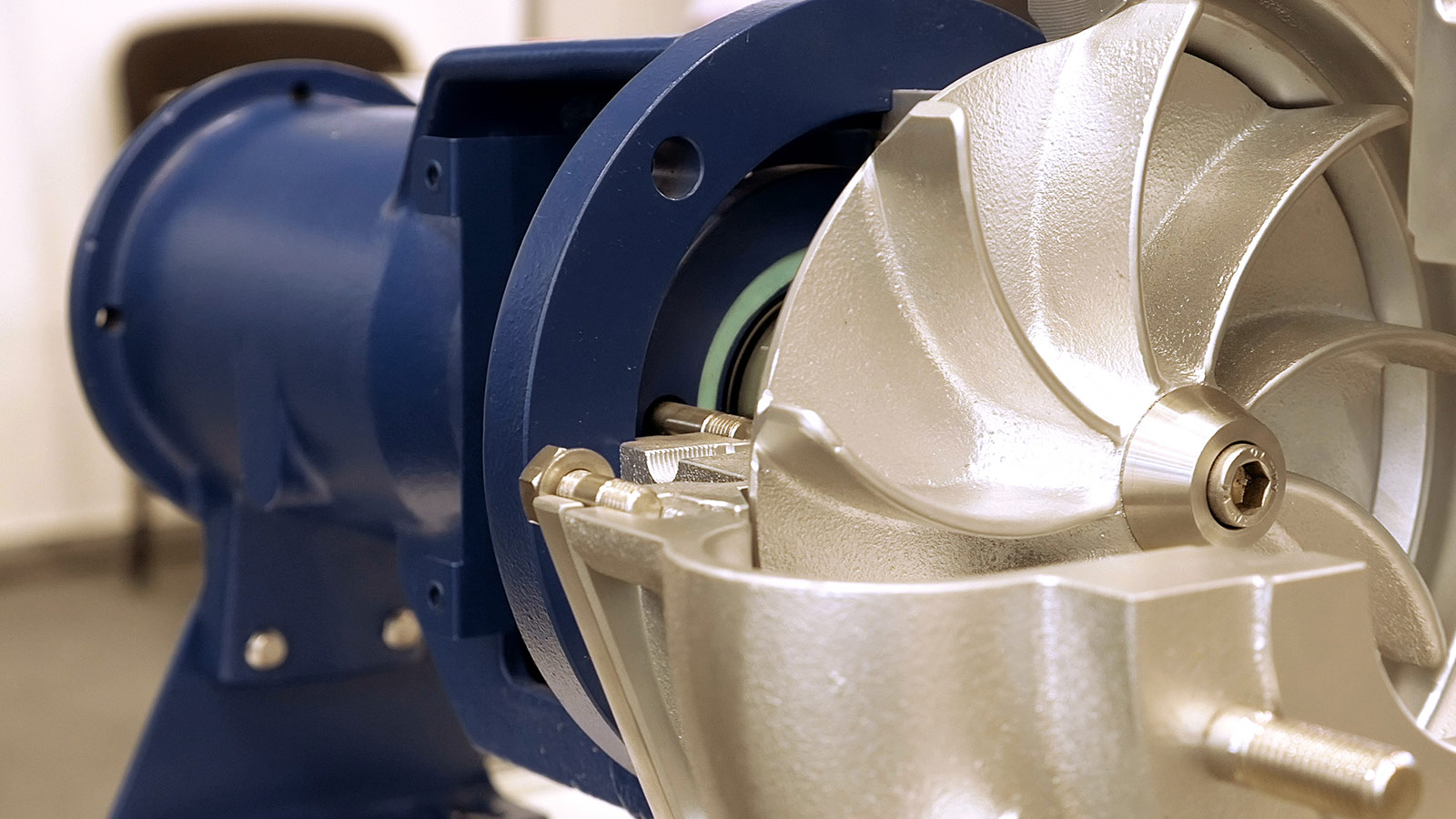
Published July 28, 2024 | 6 minute read

Published July 28, 2024 | 6 minute read
Centrifugal pumps are widely used throughout the manufacturing, oil and gas, chemical processing, power generation, and water treatment industries. They move fluids efficiently by converting rotational energy from an electric motor or engine into kinetic energy.
At Sunair Co., we understand the significance of selecting the right-size centrifugal pump for your industrial systems. Whether you need a small pump for cooling applications or a large pump for heavy-duty tasks, we offer a wide range of sizes and models to meet your unique requirements.
Centrifugal pumps utilize the movement of an impeller, a rotating component with curved blades that spins rapidly to generate centrifugal force that moves the fluid outward from the center to the outer edges—creating low-pressure and high-pressure zones, respectively.
The fluid enters the pump through a suction nozzle and enters the center of the impeller. The fluid gains kinetic energy as the impeller accelerates it to a higher velocity. An increasing cross-sectional area volute then slows the liquid down and converts velocity to pressure as the fluid exits the pump.
While centrifugal pumps come in a variety of shapes, sizes, and materials, basic components include an impeller, volute casing, back cover or seal chamber, shaft and bearings, baseplate, and a motor or other driver such as an engine or a steam turbine.
Other common system components usually include piping, valves, pressure, flow or temperature gauges, tanks, and monitoring and control devices such as variable frequency drives, transmitters or switches.
There are different types of centrifugal pumps for different jobs, including:
Overall, the choice of centrifugal pump type will depend on your specific industry, application requirements, available facility space, and factors such as the properties of the fluid being pumped.
One of the key factors in ensuring optimal pump performance is selecting the correct pump size for your specific application, since this directly impacts its ability to handle the required flow rate, pressure, and other system parameters.
Choosing the wrong size pump can lead to inefficiencies, increased energy consumption, premature wear and tear, and even system failures.
Here are some key considerations when selecting the proper centrifugal pump for your application: Try to keep in mind and specify what the normal operating values, as well as the expected minimum and maximum values, will be for each of these important parameters:
No matter what your operational requirements or industrial applications, Sunair’s team of qualified experts will assess your existing systems, evaluate your operational needs, and recommend the perfect pumps to deliver optimal performance, efficiency, and longevity.
Centrifugal pumps play a vital role in a wide range of industrial applications, and their effectiveness greatly depends on selecting the correct size for a specific task.
Choosing the right centrifugal pump for your application is essential to ensure safe and reliable operations.
Here are several of the most common uses for centrifugal pumps of different sizes:
Small centrifugal pumps are extremely versatile, and commonly used in a variety of industrial applications where the flow rate and pressure requirements are relatively low, including:
Medium-sized centrifugal pumps are needed for applications requiring moderate flow rates and pressures, and often used in environments where space is limited or where smaller centrifugal pumps are not powerful enough to meet the application's needs, such as:
Large centrifugal pumps are critical to a range of industrial applications where high flow rates and pressures are required. They are designed to handle large volumes of fluids, and often used in demanding environments where reliability and performance are essential, including:
Once you have considered all the necessary factors, it's important to consult with an industrial pump supplier such as Sunair Co. to ensure that you’re selecting the correct type and size centrifugal pump for your application.
Sunair Co. can help you determine the optimal pump size and specifications to meet your needs, and our dedicated service and repair center provides valuable support for your pump systems—start-up, reliability upgrades, preventive maintenance, breakdown services, and more—to keep your pumps running better, for longer.
Contact Sunair to outfit your facilities with the right centrifugal pump equipment today!
Receive the latest industry news, once a month. Unsubscribe anytime.
To determine the size of a component mechanical seal, measure the inside diameter of the seal face, the length of the spring, and diameter and thickness of the stationary seat.
Read NowDesigned to handle various hydrocarbons in accordance with the high standards of the American Petroleum Institute, API pumps ranging from end suction to vertical turbine models are commonly used in the petroleum, petrochemical, and natural gas industries.
Read NowRegularly inspecting your mechanical seals and monitoring various factors that could contribute to failure or leakage will help extend their lifespan, while ensuring operational efficiency and safety.
Read NowPairing Sunair Co.’s high-quality equipment with the most impactful automation opportunities within the food manufacturing industry—across the packaging, production, sanitation, product tracing, and quality control phases—enables companies to realize significant operational efficiencies and cost savings.
Read NowSunair Co. carries high-quality propane pumps and compressors from leading manufacturers such as Sundyne, Blackmer, and National Pump to ensure your operations perform safely and effectively.
Read Now2475 Wyandotte Road
Willow Grove, PA 19090
Phone: (215) 657-9800
Fax: (215) 657-9881
Email: sunairco@sunair.com
© Copyright 2025 Sunair Co.
Logos on this page are copyrights of their respective companies. The Sunair logo is a registered trademark of Sunair Co.
Leave a comment